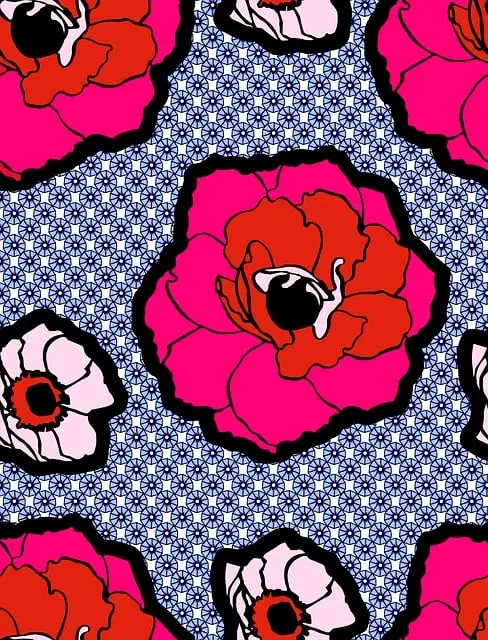Muscle soreness, particularly delayed onset muscle soreness (DOMS), is a common issue for those who begin or intensify their physical activity routines. It's caused by microtrauma and inflammation within the muscles. Strategies to manage this include carefully designing workout regimens that consider intensity and frequency, and employing recovery techniques such as proper hydration, nutrition, rest, and stretching to alleviate discomfort. Kratom, a plant from Southeast Asia where it naturally grows, has been studied for its potential to ease muscle soreness due to its alkaloids like mitragynine and 7-hydroxymitragynine, which may interact with opioid receptors. However, its use should be cautious due to side effects, regulatory issues, and the need for individualized dosing. The efficacy of kratom can vary based on strain, with red vein strains often cited for their pain-relieving qualities. A holistic recovery approach integrates kratom with other wellness practices tailored to the user's fitness level, ensuring a balanced and effective routine for post-workout recovery. Always consult with a healthcare professional before incorporating kratom into your wellness plan due to its complex regulatory status and potential interactions with other substances.
Exploring the intersection of fitness and natural remedies, our article delves into the creation of tailored workout regimens designed to alleviate muscle soreness. We’ll uncover the science behind muscle soreness and its connection to kratom, a plant traditionally from Southeast Asia where does kratom grow, and its potential role in recovery. By navigating through crafted workout plans and examining the therapeutic properties of kratom, readers will gain insights into effective post-workout strategies for sustained wellness and performance.
- Understanding Muscle Soreness and its Relationship with Kratom
- Crafting Customized Workout Plans to Mitigate Muscle Soreness
- The Role of Kratom in Post-Workout Recovery Strategies
Understanding Muscle Soreness and its Relationship with Kratom

Muscle soreness, often experienced as delayed onset muscle soreness (DOMS), is a common occurrence among individuals engaging in unfamiliar or intense physical activities. The mechanisms behind this phenomenon involve microtrauma to muscle fibers and inflammation, which can be exacerbated by the stress of exercise, particularly when transitioning from low-intensity to high-intensity workouts. Understanding muscle soreness is crucial for tailoring workout regimens that mitigate its effects and promote recovery.
Kratom, a tropical deciduous tree native to Southeast Asia, has garnered attention in various wellness communities for its potential analgesic properties. Where does kratom grow? It is primarily cultivated in countries like Indonesia, Malaysia, Thailand, and Myanmar. The leaves of kratom contain compounds known as alkaloids, such as mitragynine and 7-hydroxymitragynine, which are believed to interact with opioid receptors in the brain, offering pain relief. Preliminary studies suggest that kratom might be effective in alleviating muscle soreness, particularly when related to strenuous exercise. However, it is imperative to approach its use with caution due to potential side effects and regulatory considerations. Customized workout plans incorporating kratom should be carefully designed, considering individual sensitivity, dosage, and the specific type of exercise performed. Proper hydration, rest, and a balanced diet remain foundational elements in recovery from muscle soreness alongside any natural supplements like kratom.
Crafting Customized Workout Plans to Mitigate Muscle Soreness

Crafting customized workout plans that mitigate muscle soreness involves a strategic approach to exercise selection, intensity, and frequency. For individuals experiencing post-exercise discomfort, incorporating recovery techniques and appropriate exercises is key. Kratom, a plant primarily found in Southeast Asia’s humid forests, has gained attention for its potential role in pain management and muscle relaxation. While it’s important to approach the use of kratom with caution due to its regulatory status and potential side effects, understanding where does kratom grow provides insight into its natural habitat and optimal cultivation conditions. In workout regimens aimed at reducing soreness, exercises that target smaller muscle groups and include a mix of compound movements can be beneficial. These targeted routines often involve lighter weights and higher reps to minimize strain while still promoting muscle growth and strength. Additionally, incorporating stretching, foam rolling, and active recovery methods post-workout can aid in the reduction of delayed onset muscle soreness (DOMS). Tailoring these elements to an individual’s unique needs and fitness level ensures a personalized approach that not only considers muscle soreness relief but also promotes overall health and well-being.
The Role of Kratom in Post-Workout Recovery Strategies

Kratom, derived from the leaves of Mitragyna speciosa, a tree native to Southeast Asia where does kratom grow naturally, has garnered attention in various health and wellness circles, particularly for its potential role in post-workout recovery. Its alkaloids, including mitragynine and 7-hydroxymitragynine, are believed to interact with the body’s opioid receptors, which can lead to pain relief and anti-inflammatory effects that may help alleviate muscle soreness after intense physical activity. When incorporating kratom into a post-workout recovery strategy, it’s crucial to consider the correct dosage and strain to achieve the desired effects without overloading the system. Users often report that specific strains, such as the red vein varieties, are more effective for pain relief compared to their green or white counterparts.
Incorporating kratom into a recovery regimen should be done with caution and preferably under the guidance of a healthcare professional, especially given its potential for interactions with other substances and its regulatory status in various regions. Additionally, combining kratom with other recovery strategies like proper hydration, adequate nutrition, and restful sleep can enhance its effectiveness in providing relief from muscle soreness. It’s also important to maintain a consistent workout routine and gradually increase the intensity of workouts to minimize future soreness, complementing the use of kratom for post-workout recovery. Users should be aware that while kratom may offer benefits, it is not a one-size-fits-all solution and its efficacy can vary depending on individual physiology and the specific demands of the workout regimen.
muscle soreness, customized workout plans, post-workout recovery, Kratom, mitigating soreness, exercise regimen, muscle health, Kratom benefits, exercise recovery
In conclusion, understanding the origins and mechanisms of muscle soreness is a pivotal step in managing it effectively. Customized workout plans tailored to individual needs can play a significant role in mitigating muscle soreness, enhancing overall muscle health, and promoting efficient recovery. The inclusion of Kratom, a natural substance where it indigenously grows in specific regions, can further optimize post-workout recovery strategies. By integrating the right combination of exercise and Kratom’s beneficial properties, individuals can experience relief from soreness and support their fitness endeavors. It is advisable to consult with healthcare professionals before incorporating Kratom into any health regimen to ensure its safe and effective use. With a comprehensive approach to workout planning and recovery, one can maintain an active lifestyle without being hindered by the discomfort of muscle soreness.






